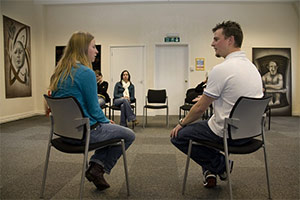Safe sex messages in bars could reduce sexual risk taking
Placing safe sex messages in pubs, bars and clubs could improve the sexual conduct of drinkers.
 That is the key finding of research that is being presented at the British Psychological Society’s Division of Health Psychology annual conference by Henry Johnson from the University of West London.
That is the key finding of research that is being presented at the British Psychological Society’s Division of Health Psychology annual conference by Henry Johnson from the University of West London.
Henry Johnson said:
“Our aim with this research was to investigate to what extent safe sexual behaviour could be encouraged in what are traditionally risky environments – particularly where alcohol is served and consumed.
“With the introduction of a safe sex message, the sexual perceptions of participants became less risky, suggesting that such messages could play an important part in reducing risky sexual behaviour that is related to alcohol consumption.”
A total of 80 students took part in the research, which sought to investigate the link between alcohol-related environments and sexual perceptions of oneself and others and whether this could be altered by the introduction of a safe sex message from a government health organisation.
The researchers found that participants in a bar environment viewed a potential partner to be less inhibited and more sexual than those in a laboratory environment, despite the fact that they had not actually consumed alcohol.
The introduction of a safe sex message weakened these effects, with participants who viewed it seeing themselves to be less sexual and their potential partner’s disinhibitions to be lessened.
The pub used in the experiment was built in a university psychology laboratory. Some participants were told that they would be interacting live with another individual in a nearby room and that they would meet this individual later for a face-to-face chat. The interaction was actually with a recording.
Henry Johnson added:
“No alcohol was consumed during this research, so further work is required to investigate whether the effects are replicated when people have been drinking.
“It does, however, suggest that the presence of safe sex messages in pubs and bars could encourage safe sexual behaviour.”
Source: British Psychological Society (BPS)




